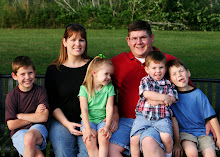These are the basics of first grade math in my classroom. Our math curriculum spirals so your child wil be practicing several of these skills each week through calendar time, direct instruction, guided practice, independent practice, and math stations. We spend 50 minutes a day on Math instruction and practice and take a spiraling assessment each Friday.
Number and Numeration
• Skip count 1,2,5,10
• Estimate collections
• Read, write and model to 1000
• Use manips to show fractions
• Model odd and even numbers
• Use manips, drawings, and tallies to show number expressions using +,-
• Compare and order whole numbers to 1.000
Data and Chance
• Collect and organize data into create tally charts, tables,, bar graphs, picture graphs, and line plots
• Use graphs to answer simple questions and draw conclusions
• Find the maximum and minimum in a data set
• Describe events using certain, unlikely, likely, impossible.
Measurement and Reference Frames
• Use nonstandard tools to
o Estimate
o Compare weight
o Compare length
o Measure length
• Know and compare the value of
o Penny
o Nickel
o Dime
o Quarter
o Dollar bill
• Make exchanges between coins
• Use thermometer to measure temperature to the nearest 10 degrees
• Use calendar to identify days, weeks, months, and dates
• Tell and show time to the nearest hour and half hour on an analog clock
Geometry
• Identify and describe
o Plane figures
o Solid figures
• Use vocabulary circle, triangle, square, rectangle, sphere, cylinder, rectangular prism, pyramid, cone, and cube
• Identify shapes as having symmetry
Patterns, Functions, and Algebra
• Extend, describe and create patterns
• Solve problems using function machines, “What’s My Rule?” tables
• Read, write, and explain expressions and numbers using +, -, and =.
• Read, write, and explain expressions and numbers using <> with cues
• Solve equations using +, -
• Apply commutative property of addition and the additive Identity to basic addition fact problems
Operations and Computations
• Know
o +/- 0
o +/- 1
o Doubles
o Sum = 10 addition and subtraction facts
• Use concrete and abstract forms to solve 1 and 2 digit addition and subtraction problems
• Calculate and compare the values of combinations of coins
• Estimate reasonableness of answers to basic fact problems
• Identify
o Change-to-more
o Change-to-less
o Comparison
o Parts-to-total
Subscribe to:
Post Comments (Atom)




No comments:
Post a Comment